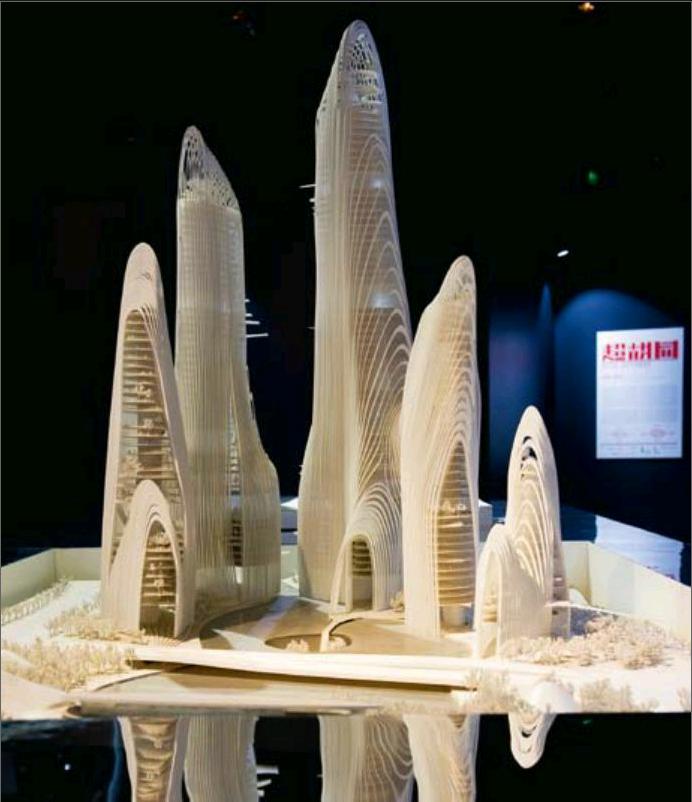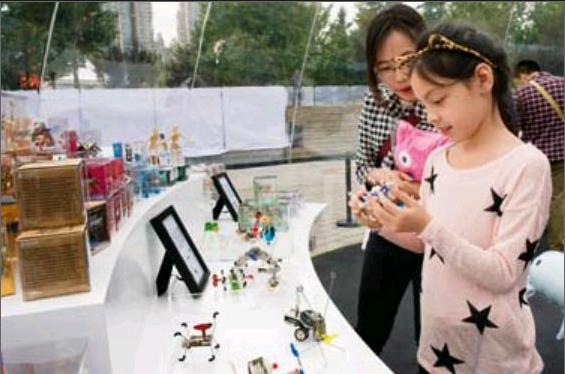A Smarter Future
by+Zi+Mo


More than half the popula- tion on the planet now lives in cities, and the globes urban residents could reach 6.3 billion by 2050. How can urban areas cope with growth and maximize space and efficiency without disrupting current urban environments? It will take some good ideas, and some of the worlds mega-cities are going about tackling the future in very different ways.
Urban Future, Smart Design
This autumn, participants of Beijing Design Week 2014, themed “Urban Future, Smart Design,” discussed how to make our cities “smarter.”
The concept of “smart city” emerged during the last decade (perhaps inspired by the ubiquity of smart phones) as a fusion of ideas about how information and communication technologies might improve the functionalities of cities, enhance their efficiency and provide new ways in which problems such as poverty, pollution, and social deprivation can be addressed. Smart cities around the globe are adopting new digital infrastructure and introducing new services in affected arenas to maintain global competitiveness.
Barcelona, a time-honored Spanish city known for soccer and contemporary art, was the guest of honor at this years Beijing Design Week. Dubbed a “self-sufficient city,” Barcelona has undergone significant reforms, becoming a leading “smart city”of Europe.
To reduce fuel consumption and promote new energy, Barcelona introduced a solar thermal ordinance in 2000 that requires all new buildings bigger than a certain size to heat water with solar thermal energy. More recently, an initiative known as “LIVE Barcelona” promoted electric vehicle adoption. The city now has almost 200 EV charging stations throughout its streets. In 2012, Barcelona developed a plan to improve public transport efficiency by deploying orthogonal bus lines. The city will also install over one million new, cutting-edge smart meters to provide customers with greater data about their consumption and help them optimize their energy usage.
“In a 21st-Century city, people subsist through interconnection and realize selfsufficiency in which the citizens can control the living structure,” illustrates Vicente Guallart, chief urban planner for Barcelona. “On the basis of peoples efficiency, energy consumption and living quality, the city recovers human nature while realizing an innovative economy through promoting the local culture based on globalized technology and economics.”
As for how Barcelona is a “self-sufficient city,” he explains, “The internet has changed our lives, but not our cities yet. A feature of a self-sufficient city is that it no longer relies much on mass-produced products from the outside, but can achieve selfsufficiency with minimum local resources and energy and through thorough utilization of information. Barcelona 1.0 has been upgraded to 4.0 and upcoming Barcelona 5.0 will pursue comprehensive self-sufficiency in terms of resources and energy.”

Inevitable Future
Many cities like Barcelona are showing a great desire to modernize their energy, transportation, and health care systems.
As part of Beijing Design Week, the Smart City Expo, held at the China Millennium Monument Museum in Beijing, served as a platform to display the latest concepts related to “smart city.” The overall message was clear: Smart cities are the future, and now is Beijings time to embrace the concept.
Over the last decade, Beijing witnessed rapid development. However, with this came problems: traffic jams, pollution and overcrowding. Chinas major cities are facing difficulties now, yet other towns will be forced to deal with them in the future. Will they cope differently?
The concept of “smart city”, which features utilization of technologies such as big data, cloud computing, and the internet of things, may provide solutions. In the modern world, the power afforded by open data from social networks, smart phones and other means is phenomenal, yet barely anything is being adequately harnessed. If all of the available data is collected, processed and understood, the possibilities in helping urbanization are hard to fathom.
When delivering a speech at the expo, Sun Peng, chief engineer of Chinese telecom giant ZTE Corporation, remarked that intelligence is the inevitable future of cities, and that goals of Chinas urbanization include enhancing efficiency of urban infrastructure, developing ecological cities and a recycling economy, and achieving sustainable development. The concept of “smart city” is the best route to achieve those goals.
“Building smart cities is going to take a lot of time and work,” Sun concludes. “In the future, cities should be combinations of the digital world and the physical world. China is taking active measures to promote smart cities, which will be the cradles of innovation and the embodiment of peoples social security – safety, health and freedom.”
End Game
Smart cities are expected to be the key to combining a sustainable future with continued economic growth.
The exact definition of a smart city varies depending on where in the world you are, but all smart city ideas and projects are direct responses to the urbanization rush – an almost tripled population in urban areas by 2030 – that has already become a defining feature of the 21st Century. As well as sustainability, a smart city needs more efficient infrastructure, including better road systems and public transport, but also smart-metered utilities like gas, electricity and broadband.
No matter which technology it applies, the ultimate goal of a smart city is to enhance livability as much as possible and gift its dwellers the best available conditions in which to spend their short time on Earth.
“Theyre meaningless if efforts to build smart cities dont bring convenience and benefits to residents,” opines Xavier Trias, mayor of Barcelona. “The aim of smart cities is to realize sustainable development. Technology should serve the needs of people, making their lives more convenient and happy.” If we want to create more livable cities for all classes of people and encourage sustainable development, making cities smarter may be the smartest thing we can do.

